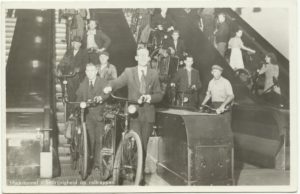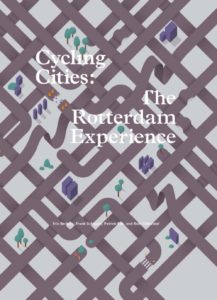Skip to content


Rotterdam, home to Europe’s largest port, is considered the most modernist city in the Netherlands. Despite its relatively low share of cycling, the city is a model for other places in the world facing similar urban traffic challenges. Once a true cycling city, Rotterdam lost that status after World War II, when the bombed-out center offered a generation of modernist planners the opportunity to rebuild it from scratch as car-oriented city. These planners, closely linked with harbor interests, disregarded the historic city grid and instead facilitated motorized traffic, at the same time catering for the public transit demands of a social democratic electorate by building the country’s first subway.
The postwar modernist urban plans sidelined the once huge numbers of cyclists, literally and figuratively. The planners who designed the Maas tunnel under the harbor’s shipping lane in the 1930s, found the bicycle-dedicated tube a waste of money because they believed cyclists would soon disappear from the streets. To their surprise, commuting cyclists still far outnumbered cars in 1950. Pictures of the streams of cyclists descending the world famous, uniquely designed bicycle-escalators in the tunnel have become iconic for Rotterdam, even Dutch, cycling culture. These and other informative cycling stories – including the surprisingly early resistance to car-oriented and modern city plans and the key role played by a liberal-conservative pro-cycling activist alderman in the early 1970s – are told for the first time in this richly illustrated book. Cycling Cities: The Rotterdam Experience also shows how this most modernist and car-oriented Dutch city is dealing with policy and planning today as cycling has become an integral part of the life in modern cities.

